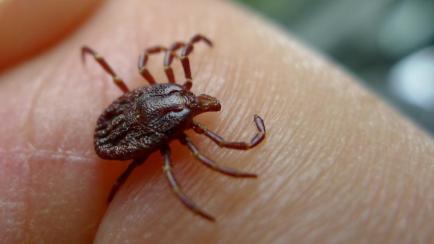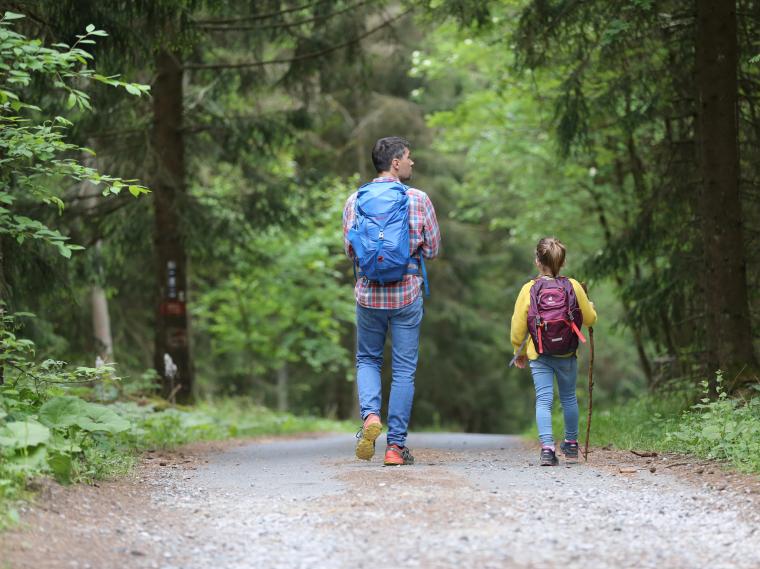- Managing your Practice
-
- Your Benefits
-

Introducing the ultimate Club MD experience
From work to play, and everything in between, we provide you with access to hundreds of deals from recognizable, best-in-class brands, elevating every facet of your life – from practice supports to entertainment, restaurants, electronics, travel, health and wellness, and more. Your Club MD membership ensures that these deals are exclusive to you, eliminating the need to search or negotiate.
Welcome to the ultimate Club MD experience. Your membership, your choices, your journey.
-
- Advocacy & Policy
-
- Collaboration
- News & Events
-

Stay Informed
Stay up to date with important information that impacts the profession and your practice. Doctors of BC provides a range of newsletters that target areas of interest to you.
Subscribe to the President's Letter
Subscribe to Newsletters
-
- About Us
-

Ticks and Lyme disease: What you need to know
July 5, 2021
Together for Health
With the summer weather upon us and recreational travel around the province once again allowed, many British Columbians will soon be enjoying more outdoor activities such as hiking and camping. But with the warmer weather comes an increase in the number of ticks and tick-borne illnesses, especially the most common Lyme disease, which can affect individuals of any age.
What is Lyme disease
Lyme disease is a bacterial infection transmitted through a tick bite. If caught early, Lyme disease is easily treated with antibiotics. But if left untreated, it becomes an increasingly complex disease to diagnose and treat. According to the Public Health Agency of Canada, the number of reported cases has increased 14-fold in the country since 2009.
Symptoms of Lyme disease include a rash, fever, chills, fatigue,  body aches, headache, neck stiffness, and swollen lymph nodes – all of which can mimic other diseases including COVID-19 and can lead to nerve tissue damage, neurological problems, or heart issues. These multiple symptoms can also result in mistaken diagnoses including meningitis, arthritis, stroke, heart disease, Bell’s palsy, and multiple sclerosis.
body aches, headache, neck stiffness, and swollen lymph nodes – all of which can mimic other diseases including COVID-19 and can lead to nerve tissue damage, neurological problems, or heart issues. These multiple symptoms can also result in mistaken diagnoses including meningitis, arthritis, stroke, heart disease, Bell’s palsy, and multiple sclerosis.
Look out for the bull’s eye
One of the most common early signs of Lyme disease is an expanding skin rash that looks like a “bull’s eye.” If this or any other symptoms appear within 3-30 days after being bitten by a tick, consult your family doctor or other healthcare professional.
Protect yourself from ticks
Ticks are most commonly found in long grasses and wooded or bushy areas – places that draw many summer outdoor enthusiasts – but they can also be found around homes, in shrubs or leaf piles, and parks and trails. The best defense against contracting Lyme disease – or any other tick-borne illness – is to protect yourself, so here are some steps you can take:
- When in parks and wooded areas, wear a Health Canada-approved insect repellent containing DEET on exposed skin or clothing
- At home, keep ticks away by keeping grass mowed, removing brush and fallen leaves, cleaning up areas under bird feeders to ward off small mammals that can carry ticks, and keep woodpiles dry and away from the house
- Do a full body check when you get home — especially toes, knees, groin, armpits, and scalp — and check your pets, too
- Stay on trails when hiking in the woods or walking in areas of long grass
- Wear long pants tucked into socks or boots, long sleeves, and light colours to make it easier to spot ticks

Removing a tick
If you do find a tick on yourself or someone else:
- Remove it as quickly as possible — the risk of Lyme disease increases with the length of time it’s attached
- Use tweezers or a “tick key” to grasp the tick’s head as close to the skin as possible and pull slowly and gently, without twisting, until it comes out
- Once the tick has been removed, clean the bite area with soap and water, then apply an antiseptic cream. Wash hands with soap and water or use alcohol-based hand rub
- See a doctor if you’re unsure of how long the tick has been attached or if it’s been at least 24 hours
For more information on Lyme disease or how to properly remove a tick, visit the BC Centre for Disease Control the BC Government’s Ticks in British Columbia page.




